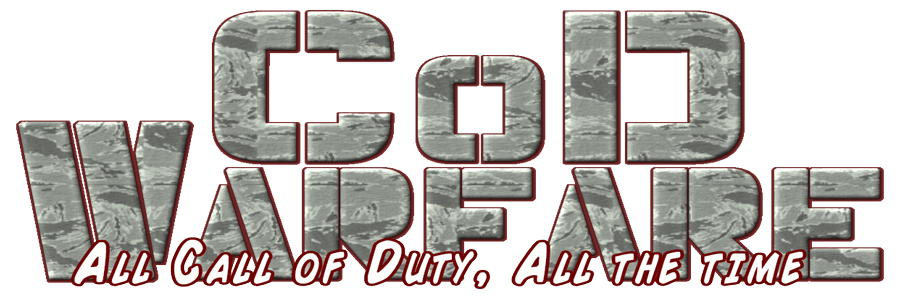Got a Trojan virus in your PC? You won’t even come to know about it as Trojan viruses generally appear like legitimate applications and stay out of detection as long as possible and until removed. Trojan viruses unlike viruses do not clone themselves and remove data or damage files. They just stay in your PC, operate like genuine Windows applications, and cause maximum harm to you and your PC.
How a trojan virus works?
Since Trojan virus operates like a genuine application, it bypasses the security system (your antivirus will not show any warning alert) and enables the hacker to access and take remote control of your PC and operate it in the manner he wants. It converts your machine into a server to exchange information with the hacker’s system.
What does these virus do?
Most of us don’t even come to know that our computer has become infected with a Trojan virus. Moreover, you think that why a thing like Trojan virus should ever bother you when you have not clicked on anything that could potentially be dangerous, everything you checked like an email was familiar to you.
But, it is there on your computer, doing all the crazy things like opening or closing your DVD/CD tray, flooding your inbox with spam/junk messages, not letting you access websites of your choice, deleting vital data from your PC, and doing all sorts of things that fall under the category of cyber crime. Other signs of Trojan virus infection include:
• PC slows down/crashes suddenly• The desktop settings appear to be automatically modified• PC automatically restarts and shuts down and continues the same in loop• PC does not shut down at all• Steals confidential information including banking/credit card, email/messenger passwords etc.• Disable executable applications such as Windows Task Manager, Firewall etc.• Invites adware, viruses among other malicious programs to cause maximum destruction
Sources of Trojan Virus Infection
A Trojan virus is purposefully integrated into freeware applications such as antivirus programs, weather forecast programs, keygens, tray clocks, emails/email attachments, pictures, links, or messenger among others. Users, lured by the word ‘free’, click on such applications and get trapped into the hacker’s maliciously designed web.
How do you detect if your PC has a Trojan Virus?
Your antivirus software cannot detect a Trojan virus until it fully enters your PC with all the updates duly downloaded. A Trojan virus can trick you big time by not letting you delete it, so be ready to follow the instructions carefully.
Removal Procedure:
Update your antivirus program, (I am assuming at least you have an antivirus protection on your PC, if you don’t have then download one, you can choose a free version from a wide range of security programs such as Avira AntiVir Personal 10, Microsoft Security Essentials, and AVG Anti-Virus Free Edition 2011 etc.)
Run a custom scan to scan your hard drive, wait for the scan to finish, if it brings up any malicious item in scan results then follow the instructions to remove it. Your antivirus will delete these threats automatically and will not ask you to follow instructions.
Download http://www.malwarebytes.org/mbam.php or any other free Trojan virus-removal tool, and update it to scan, detect, and delete Trojans that were missed by your antivirus program. Finally, recheck your hard drive by running a full scan just to ensure there is not any Trojan virus left in your PC.
Additional Tips:
If you are not able to access your PC and update your antivirus, then shut down your PC and reboot it into ‘Safe Mode’ or ‘Safe Mode with Networking’. You can access ‘Safe Mode’ option by continuously tapping ‘F8′ key on the keyboard while the Windows is rebooting (you should start tapping the key before the Windows logo appears).
If you want to remove Trojan virus manually, you would need decent level of knowledge to detect and completely remove infected files and their registry entries. You might need to write down the infected file names and their location where they can be removed from.
If still nothing helps, you can format your hard drive to completely erase the Trojan virus and its traces also. However, save all your data to an external hard drive or CD before performing this step so that you can get your data back.
The abovementioned procedure should help you clean your PC thoroughly. However, it involves some technicality and difficulty if you are not a tech-savvy person. The article is associated with ‘How to Get Rid of a Trojan Virus from Your PC: An Easy Self-Help Guide’ available on resent: :cpuhate:
resent: :cpuhate:
How a trojan virus works?
Since Trojan virus operates like a genuine application, it bypasses the security system (your antivirus will not show any warning alert) and enables the hacker to access and take remote control of your PC and operate it in the manner he wants. It converts your machine into a server to exchange information with the hacker’s system.
What does these virus do?
Most of us don’t even come to know that our computer has become infected with a Trojan virus. Moreover, you think that why a thing like Trojan virus should ever bother you when you have not clicked on anything that could potentially be dangerous, everything you checked like an email was familiar to you.
But, it is there on your computer, doing all the crazy things like opening or closing your DVD/CD tray, flooding your inbox with spam/junk messages, not letting you access websites of your choice, deleting vital data from your PC, and doing all sorts of things that fall under the category of cyber crime. Other signs of Trojan virus infection include:
• PC slows down/crashes suddenly• The desktop settings appear to be automatically modified• PC automatically restarts and shuts down and continues the same in loop• PC does not shut down at all• Steals confidential information including banking/credit card, email/messenger passwords etc.• Disable executable applications such as Windows Task Manager, Firewall etc.• Invites adware, viruses among other malicious programs to cause maximum destruction
Sources of Trojan Virus Infection
A Trojan virus is purposefully integrated into freeware applications such as antivirus programs, weather forecast programs, keygens, tray clocks, emails/email attachments, pictures, links, or messenger among others. Users, lured by the word ‘free’, click on such applications and get trapped into the hacker’s maliciously designed web.
How do you detect if your PC has a Trojan Virus?
Your antivirus software cannot detect a Trojan virus until it fully enters your PC with all the updates duly downloaded. A Trojan virus can trick you big time by not letting you delete it, so be ready to follow the instructions carefully.
Removal Procedure:
Update your antivirus program, (I am assuming at least you have an antivirus protection on your PC, if you don’t have then download one, you can choose a free version from a wide range of security programs such as Avira AntiVir Personal 10, Microsoft Security Essentials, and AVG Anti-Virus Free Edition 2011 etc.)
Run a custom scan to scan your hard drive, wait for the scan to finish, if it brings up any malicious item in scan results then follow the instructions to remove it. Your antivirus will delete these threats automatically and will not ask you to follow instructions.
Download http://www.malwarebytes.org/mbam.php or any other free Trojan virus-removal tool, and update it to scan, detect, and delete Trojans that were missed by your antivirus program. Finally, recheck your hard drive by running a full scan just to ensure there is not any Trojan virus left in your PC.
Additional Tips:
If you are not able to access your PC and update your antivirus, then shut down your PC and reboot it into ‘Safe Mode’ or ‘Safe Mode with Networking’. You can access ‘Safe Mode’ option by continuously tapping ‘F8′ key on the keyboard while the Windows is rebooting (you should start tapping the key before the Windows logo appears).
If you want to remove Trojan virus manually, you would need decent level of knowledge to detect and completely remove infected files and their registry entries. You might need to write down the infected file names and their location where they can be removed from.
If still nothing helps, you can format your hard drive to completely erase the Trojan virus and its traces also. However, save all your data to an external hard drive or CD before performing this step so that you can get your data back.
The abovementioned procedure should help you clean your PC thoroughly. However, it involves some technicality and difficulty if you are not a tech-savvy person. The article is associated with ‘How to Get Rid of a Trojan Virus from Your PC: An Easy Self-Help Guide’ available on










